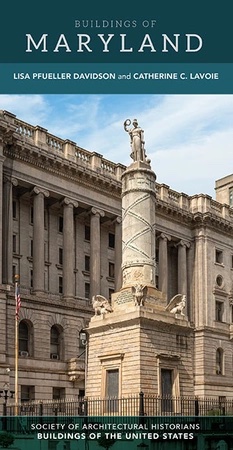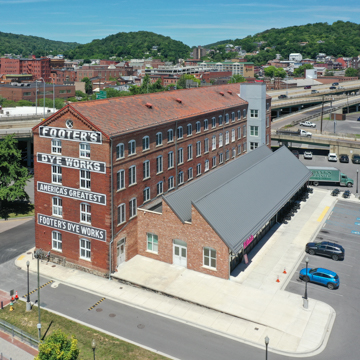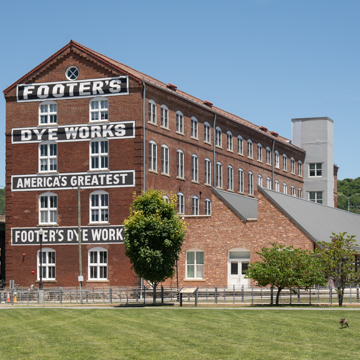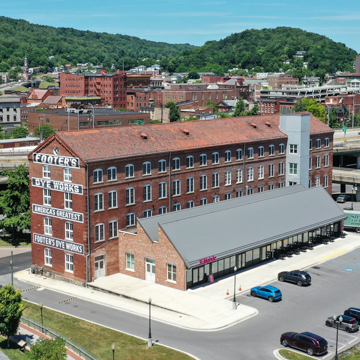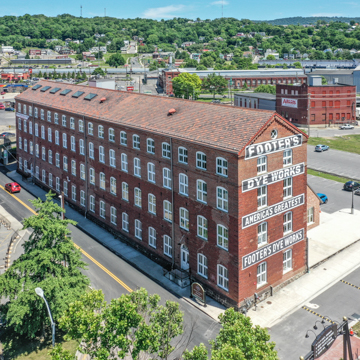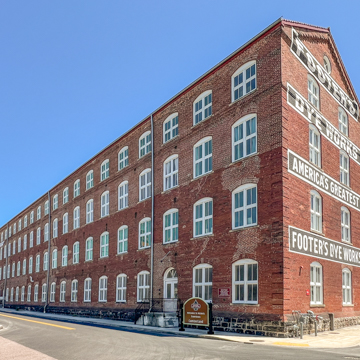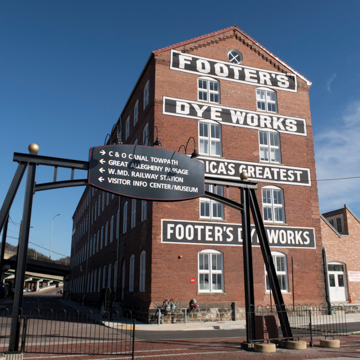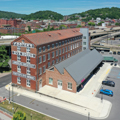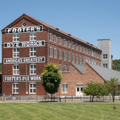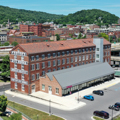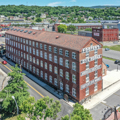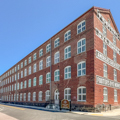Once part of a sprawling early-twentieth-century industrial complex, the preserved and adapted Footer’s Dye Works building represents Cumberland’s past lively manufacturing sector. Thomas Footer established his company in Cumberland in 1870. Footer’s was a major cleaning and dyeing operation in the Mid-Atlantic, with branch offices in Baltimore, Pittsburgh, and Philadelphia. By the turn of the twentieth century lack of room for expansion at the original site motivated Footer and his sons to build a new complex near the C&O Canal terminus. The company closed after declaring bankruptcy in 1936 due to the Great Depression and an industry shift to favor new dry-cleaning methods over steam cleaning.
The four-story twenty-bay-long brick structure is only two bays wide at its gable ends, with corbeled cornices, belt courses, and quoins adding decoration. Massive painted signs on the west gable end declaring “Footer’s Dye Works America’s Greatest” were repainted as part of the renovation. In 1997 when the Canal Place Preservation and Development Authority purchased the property, most of the complex had been demolished. The preserved building sits near the Canal Place fairgrounds, the restored Western Maryland Railway Station, and the C&O Canal National Historical Park. Renovated using federal and state historic preservation tax credits, Footer’s Dye Works now houses residential units on the upper floors and offices and retail, including a brew pub, on the lower. A one-story sawtooth roof addition at the south elevation suggests the original demolished in 2009.














